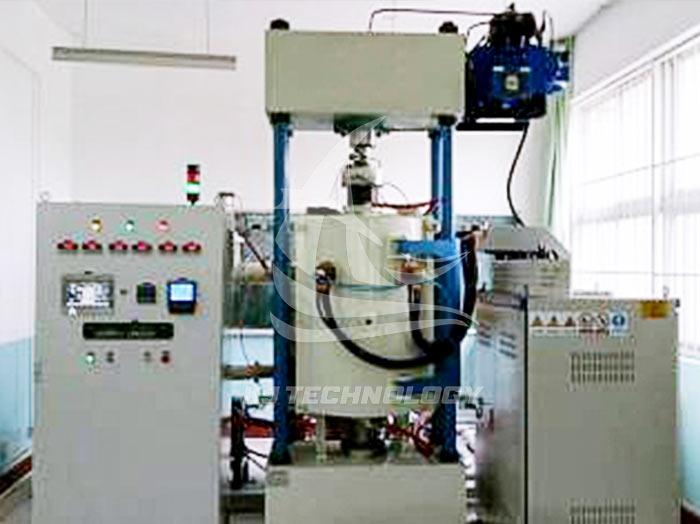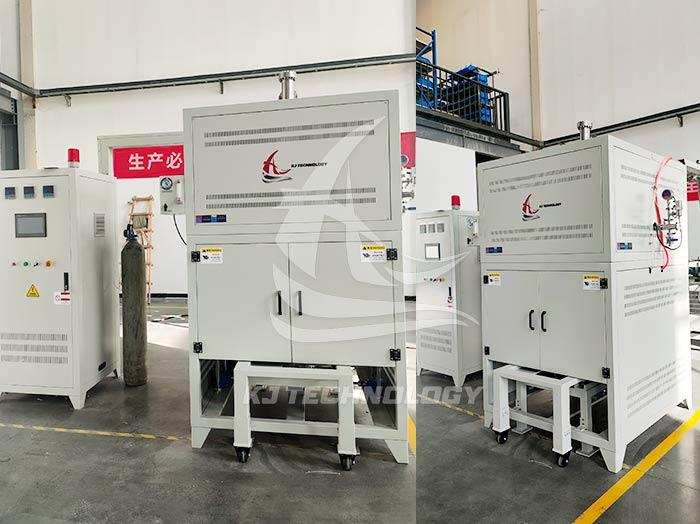What materials can be processed by an electric heating vacuum annealing furnace?
 11-12-2025 Author: KJ technology
11-12-2025 Author: KJ technology
Electric heating vacuum annealing furnace, by creating a high vacuum environment and combining precise electric heating control, can process various materials sensitive to oxidation, decarburization or pollution, especially suitable for scenarios that require high-temperature treatment and maintain surface purity. The following are the main types of materials that it can handle and specific application instructions:
1. Metal materials
stainless steel
Application: Relieve processing stress, improve corrosion resistance, and enhance surface smoothness.
Example: Austenitic stainless steels such as 304 and 316L can reduce intergranular corrosion tendency after vacuum annealing, making them suitable for food and medical equipment manufacturing.
alloy steel
Application: Adjust organizational structure, improve toughness, and eliminate hydrogen embrittlement.
Example: High strength structural steel (such as 42CrMo4) can refine grain size and improve fatigue life through vacuum annealing; Tool steel (such as H13) reduces the risk of quenching cracks after annealing.
Titanium and titanium alloys
Application: Prevent oxidation, improve processing performance, and eliminate internal stress.
Example: After vacuum annealing, aerospace grade titanium alloys (such as Ti-6Al-4V) form a dense oxide film on their surface, enhancing their high temperature resistance.
Copper and copper alloys
Application: Reduce oxidation, improve conductivity, and enhance cold working performance.
Example: After vacuum annealing of oxygen free copper (OFHC), the oxygen content drops to an extremely low level, making it suitable for high conductivity scenarios such as electronic packaging.
aluminum alloy
Application: Eliminating casting stress, stabilizing dimensions, and improving surface quality.
Example: Vacuum annealing of aviation aluminum alloys (such as 7075) can reduce heat treatment deformation and improve structural stability.
magnesium alloy
Application: Prevent combustion, improve corrosion resistance, and enhance plasticity.
Example: After vacuum annealing, a protective oxide layer is formed on the surface of AZ91D magnesium alloy, which is suitable for lightweight automotive components.
2. Special materials
Rare metals and refractory metals
Materials: tungsten (W), molybdenum (Mo), niobium (Nb), etc.
Application: High temperature vacuum annealing can eliminate work hardening, restore plasticity, and avoid oxidation losses.
Example: After vacuum annealing, tungsten wire is used for bulb filament to extend its service life.
semiconductor material
Materials: Silicon (Si), Germanium (Ge), Gallium Arsenide (GaAs), etc.
Application: Vacuum annealing can reduce crystal defects, activate doping elements, and improve the performance of semiconductor devices.
Example: Single crystal silicon wafers annealed for use in solar cells to improve photoelectric conversion efficiency.
ceramic materials
Materials: Aluminum oxide (Al ₂ O ∝), silicon nitride (Si ∝ N ₄), etc.
Application: Vacuum annealing can eliminate sintering stress, improve density, and enhance mechanical strength.
Example: After annealing, the wear resistance of ceramic bearing rings is significantly improved.
optical glass
Application: Eliminate internal stress, reduce light scattering, and improve transmittance.
Example: After vacuum annealing, optical lenses can be used for high-precision instruments such as microscopes and telescopes.
3. Composite materials and coating materials
Metal based composite materials
Materials: Carbon Fiber Reinforced Aluminum Matrix Composite (CFRP/Al), Particle Reinforced Magnesium Matrix Composite, etc.
Application: Vacuum annealing can improve interface bonding strength and reduce cracking caused by differences in thermal expansion coefficients.
Coating material
Material: Pre treatment of substrate before physical vapor deposition (PVD) or chemical vapor deposition (CVD) coating.
Application: Vacuum annealing can clean the surface of the substrate and improve the adhesion of the coating.
Example: Annealing before TiN coating on the tool surface can significantly extend its service life.
4. Selection suggestions
Temperature range: Select equipment based on the annealing temperature of the material (such as selecting ≤ 800 ℃ for low-temperature annealing and ≥ 1200 ℃ for high-temperature annealing).
Vacuum requirement: Highly active metals require an extremely high vacuum degree (≤ 10 ⁻³ Pa), while ordinary metals can be relaxed to 10 ⁻¹ Pa.
Furnace size: Select furnace volume based on workpiece size and batch size to avoid space waste or uneven heating.
Cooling method: Materials sensitive to cooling rate (such as high carbon steel) need to be equipped with a rapid cooling system (such as gas quenching or oil quenching).








